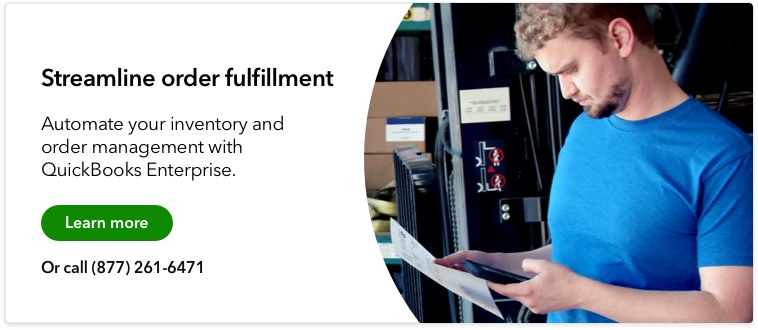Shipping fulfillment is a key process to any business that sells products, whether it’s a distributor, ecommerce business, or big box retailer.
Fulfillment encompasses all the steps after a customer places an order until the order is delivered. It involves critical business functions, such as collecting customer information, credit card processing, inventory management, and logistics tracking.
In many cases, shipping fulfillment may be the customer's first direct experience with your product, making it impactful for customer retention.
What is shipping fulfillment?
Shipping fulfillment is storing, packing, and delivering orders to customers. It takes care of all aspects of shipping, including sending tracking notifications and offering customer support for any returns or delivery delays.
Companies have several options when it comes to handling shipping fulfillment. They can keep the function in-house, outsource to third-party order fulfillment services, or combine internal and external teams.
Why a resilient shipping fulfillment process is essential today
With so many factors involved, such as varying shipping times and fulfillment costs, there’s a high likelihood of disruptions at any step of the fulfillment process. The complexity of the process makes it even more critical for companies to maintain a resilient shipping fulfillment process.
Resilience in shipping fulfillment refers to a company’s ability to continue operations when faced with sudden changes or disruptions. Examples of common fulfillment disruptions include extreme weather events, shortages in the supply chain, or surges in shipping rate pricing.
To safeguard against these situations, companies should map out their entire fulfillment process and prepare a plan of action for all possible scenarios. By identifying the best alternatives ahead of time and quickly responding to any sudden changes, a company is able to minimize any damages and continue delivering a seamless customer experience.
5 Steps of the shipping fulfillment process
It’s becoming increasingly important to understand everything that goes into delivering products to customers, even if you outsource all or part of the process to a fulfillment partner. While the details and timelines are different for every business, these are the five main steps of the shipping fulfillment process:
Receiving inventory
The first step in fulfillment is receiving the products at a designated storage facility, whether that’s a warehouse, ecommerce fulfillment service, or business office. Workers inspect each inbound delivery for product accuracy and quantity, and record its receipt in with an inventory management system like QuickBooks Enterprise.
Storing inventory
Inventory storage is a detailed process and affects how quickly the company can process customer orders. After receipt, each product is placed in its specific storage space, according to the company’s warehouse layout design, and assigned its own SKU. All these details are then updated with warehouse inventory tracking so products can be easily located for order processing.
Processing orders
Order processing starts the moment a customer places an order through any sales channel. This step includes inputting all customer details and assigning a packing slip to warehouse pickers, who then retrieve all ordered products from their storage location.
Some orders require kitting, or compiling multiple products into a single order, before they can be shipped to the customer. The complete order is then packed in secure packaging materials, along with a printed shipping label, and prepared for shipment. QuickBooks Enterprise features pick, pack, and ship functionality along with mobile barcode scanning to reduce errors and increase fulfillment accuracy.
Shipping orders
Once a customer order is packed, it’s ready for shipment. Companies can ship orders through their own internal resources or use any number of shipping solutions. This includes distributors, dropshipping services, or other third-party fulfillment companies. Shipment services typically come with real-time order tracking and notifications sent to both the company and the customer.
Processing returns
Returns are not always necessary for every order, but the process (referred to as returns management or reverse logistics) is considered an extension of shipping fulfillment.
If customers request a return, the order is sent back and reprocessed into inventory. Sometimes, this requires issuing refunds or repairs, depending on the reason for the return.
Best practices shipping fulfillment optimization
To make sure your shipping fulfillment is running optimally, here are the top best practices to apply to your business.
Improve inventory and warehousing management
Inventory management is at the center of any shipping fulfillment strategy. Companies should always maintain real-time inventory levels for every product to prevent accepting orders that can’t be fulfilled. All products in stock should also be logged and easily located with an inventory or warehouse management system. If inventory isn’t properly tracked, it can severely delay customer orders and result in lost sales.
Streamline the logistics process
Shipping fulfillment solutions are largely a logistics endeavor. While it involves a number of external factors, there are several things a company can do to streamline its logistics. Start by looking for ways to reduce recurring errors, unnecessary shipping costs, or opportunities to consolidate same-day deliveries. It’s also important for all internal teams to have access to real-time shipping information so order adjustments can be easily made without interruption.
Implement an order management system
Consolidating all information needed to fulfill an order can reduce unnecessary steps and optimize the entire process. This is especially important when dealing with complex operations, such as a network of fulfillment centers, multiple integrations, or international shipping.
An order management system serves as a single source of customer data, on-hand inventory levels, and shipment tracking from the warehouse to the customer’s doorstep. By automatically updating all critical information in real time, companies gain complete transparency in every step of the fulfillment process.
How QuickBooks Enterprise improves your shipping fulfillment operations
QuickBooks Enterprise allows companies to manage their entire order fulfillment process from a single system. Everything from receiving a customer’s orders to the final delivery can be streamlined thanks to automatic updates and synced information across devices.
Quickbooks Enterprise continuously monitors what inventory is in stock, on order, and their exact location in the fulfillment process. Warehouse teams can locate products faster with pick-and-pack instructions sent directly to their mobile barcode scanners. Shipping labels and invoices are also automatically pre-filled with customer information and can be printed straight from the QuickBooks platform.
With the ability to access and automate key steps in the shipping fulfillment process, your company can easily accommodate orders, increase productivity in all areas, and effectively grow its operations.
Final thoughts
Shipping fulfillment involves many moving parts, making it a challenge for any business. It takes constant monitoring and analyzing to arrive at an optimal fulfillment process.
By outlining all the steps during fulfillment operations and applying the best practices listed above, you can create a system that best reduces unnecessary delays and increases customer satisfaction.
QuickBooks Enterprise helps to streamline order and shipping fulfillment effectively, with instant updates across all devices and automations for every part of the process.











